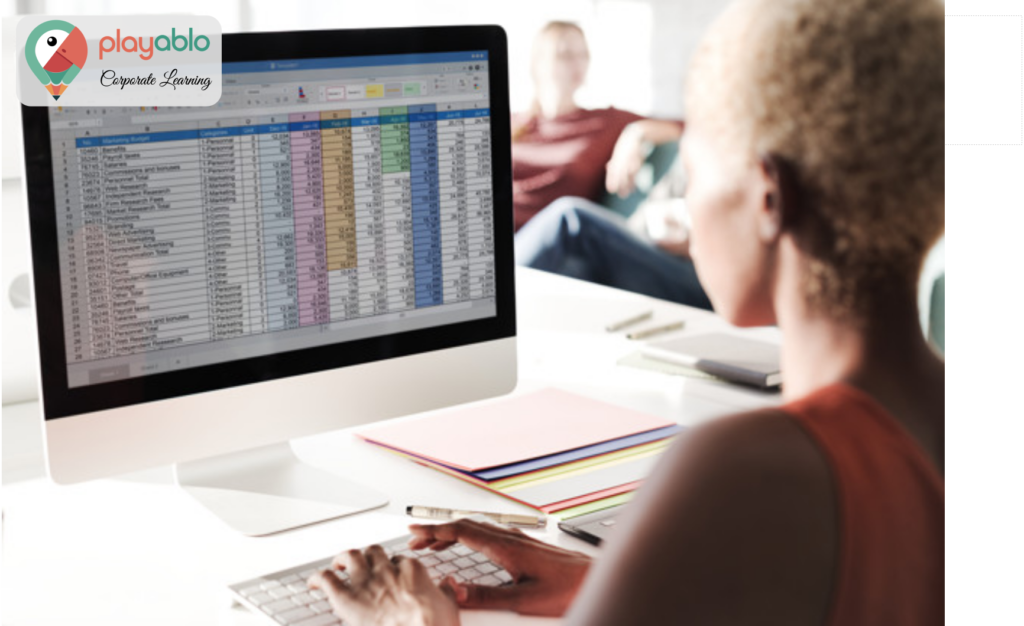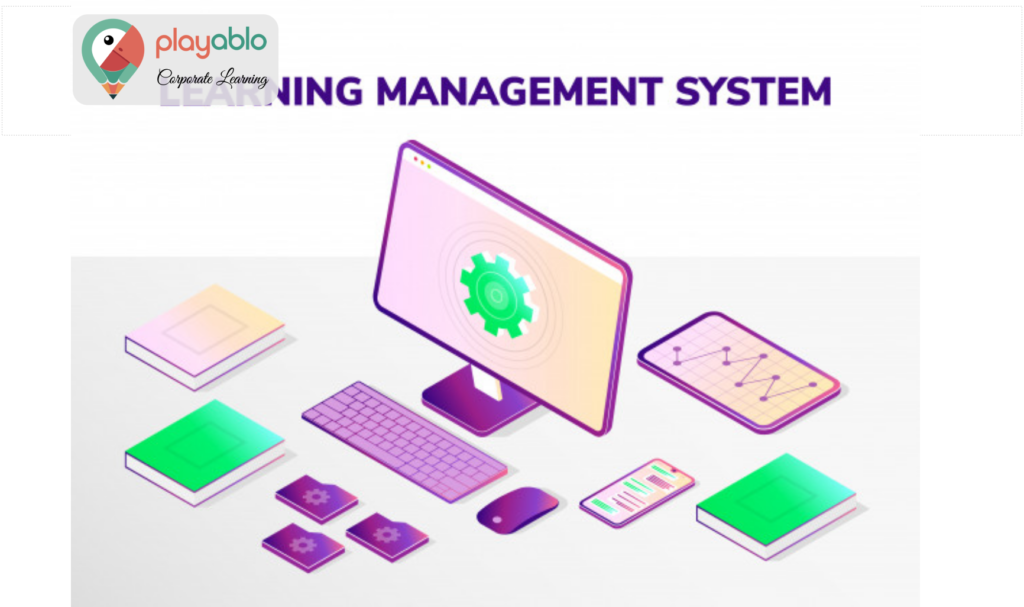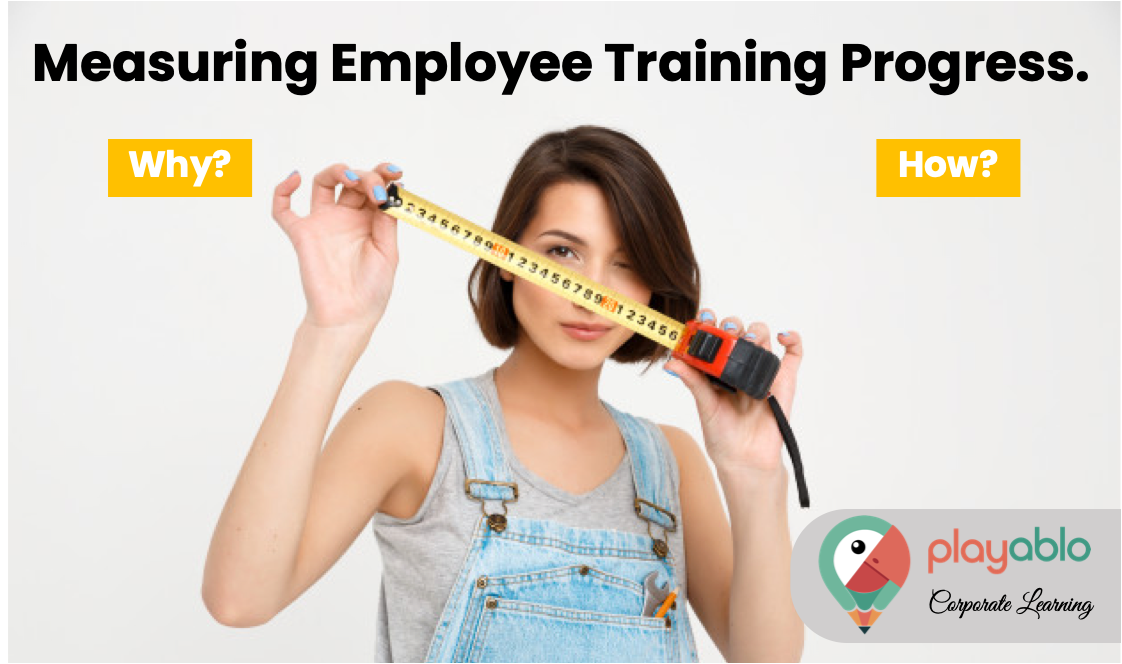Why should you track employee training progress? As per Guide2Research, LinkedIn’s Workplace Learning Trends reports that “94% of employees would stay longer in companies that are willing to invest in their professional development.” All-inclusive career growth goes hand-in-hand with corporate training. But you are already aware of that, aren’t you?
So, let’s come to the point. Let’s assume that you already have a corporate training model in place. But how effective is it? Do you have any quantifiable method to measure if your learning methods are working? Do you have the required tools to calculate the course completion rates, learner engagement quotient, and training progress? In short, do you track employee training progress?

In fact, a majority of companies do have a training model in place. However as per a study by ATD, “Only 35% of organizations evaluate the effectiveness of learning programs to any extent. Furthermore, only 15% measure the ROI of any learning programs.”
Without the availability of any analytics on training progress and effectiveness, it isn’t straightforward to prove that L&D makes an impact on the business. It’s equally hard to justify keeping or expanding the existing programs if you can’t showcase quantifiable results.
Now, how do you track employee training? What metrics are needed to measure training progress? And how do you ascertain that you have embraced the right model to quantify training assessment? As usual, we have you covered!
Table of Contents
What Is the Importance of Tracking Employee Training?
When you track employee training progress, you have a clear synopsis of where your learners stand on the learning curve. The correct numbers will give you a bird’s eye view of where learners are getting stuck in their learning journey and which training materials are ineffective or obsolete.
Again, it also gives an idea of why trainees are dropping out at a certain phase of the training. Is the course too boring? Is the engagement quotient low?
When you have access to this data, you can improvise your training programs and enhance the learning experience — thereby, creating a riching learning culture in your company. You can also up the interest factor by adding engaging content — complete with new ideas, multi-media like video clips and audio, or gamified elements.
Ad: PlayAblo’s Enterprise-Grade Micro-Learning platform is built for millennial learners. Micro-Learning, along with assessments and gamification features, ensures learning outcome measurement along with sustained engagement.
Find out more and request a custom demo!
Again, when employees do not learn, they do not grow. And an under-skilled workforce is detrimental to the success of your business. Finally, if you wish to update old courses, which have become obsolete, you might want to solidify your case — to get approval from upper management. How do you do that? Track employee training progress! Quantifiable training metrics can help create a number-rich report best suited to convince your managers and L&D leadership.
How Do You Track Employee Training Progress?
Now that you understand why it is vital to have a clear answer to this question – How to track training progress? How do you get started with a full-fledged approach to track employee training progress? With the help of the right employee training progress tracker tools!
Tracker Tool Number 1: Excel

A training tracker Excel template is the oldest method to track employee training progress when you lack the budget to invest in all-inclusive software. This is a pretty old-school tool, but it still has some benefits. A tracker in an Excel or Google Sheet, as you might already know, comprises rows and columns to keep a record of course lists, performance scores, and trainee details.
Excel does consume a lot of time. It can be cumbersome since it’s completely manual, and you need to update the sheet each time an employee completes a course. You additionally need to keep repeating the logs whenever there are particular changes in the curriculum.
Tracking Tool Number 2: Tracking Software
Tracking software is comparatively easier than an Excel file. It enables you to keep a record of simple and generic training metrics, such as course completion rates. Newer versions of such tools are embedded with features like generating automated training progress reports.
However, software-based tracking tools are effective only when your classes are offline or instructor-led. If you have an online training model in place, it can be painful to use software to transfer data from one platform to another.
Tracking Tool Number 3: LMS

An LMS is a comprehensive tracking solution that requires no manual interference. It stores all the information in one place. This includes your training materials and progress reports.
An LMS is the most effective model for disseminating eLearning courses. Its multiple features include administration, user management, documentation, tracking, and reporting. An LMS also comes equipped with free tracking software. You can maintain a record of all your training assessments and progress data — in a single place!
An LMS allows the automatic generation of employee reports, notifications, and email reminders. The list can go on! But you can understand why an LMS should be your go-to method to keep a record of training data!
Tracking Tool Number 4: Training Matrix

A training matrix is a visual representation of an organization’s training requirements, showing what training courses employees need to complete and when they need to complete them. It is often used as a tool to ensure that employees receive the necessary training for their job roles and that compliance requirements are met.
The matrix may include information such as the training course name, the employee’s name, the completion date, and any other relevant details. By using a training matrix, managers can quickly see which employees have completed the required training and which employees are still in progress, allowing them to track employee training more efficiently.
Tracking Tool Number 5: Performance Management System

Performance management systems are software tools that help organizations track and manage employee performance. These systems typically include training tracking as one of their features, allowing organizations to monitor employee progress and ensure that they are meeting performance goals.
They may also include features such as goal setting, performance appraisal, and ongoing feedback. By combining training tracking with performance management, organizations can gain a more comprehensive view of employee development and identify areas for improvement.
Performance management systems can be especially helpful for companies that need to track employee training and performance across multiple locations or departments.
Tracking Tool Number 6: Training Evaluation Tool
Training evaluation tools are used to track employee training programs by measuring learning effectiveness. They can be used to collect feedback from employees and managers on the quality and relevance of training and to measure changes in employee behavior or performance after completing training. These tools can be in the form of surveys, questionnaires, interviews, or focus groups.
Tracking Tool Number 7: Talent Management System

Talent management systems are comprehensive HR software applications that include features for training and development. These systems can be used to manage employee performance, succession planning, career development, and learning management.
They allow organizations to track employee training, identify skill gaps, and create personalized development plans for each employee. Talent management systems also provide insights into workforce trends and can help organizations align their training programs with their overall business strategy.
Tracking Tool Number 8: LXP
LXPs, aka LEPs (Learning Experience Platforms), are similar to LMSs and can be used to track employee training as well. But are designed to provide a more personalized and engaging learning experience. They often use artificial intelligence and machine learning algorithms to recommend content based on an employee’s individual learning style and preferences.
LXPs typically offer a wide variety of content types, including video, podcasts, and interactive activities, and allow employees to learn at their own pace. Additionally, they often incorporate social learning features, such as discussion forums and peer-to-peer learning, to facilitate employee collaboration and knowledge sharing.
What Are the Key LMS Metrics to Measure Training Progress?
The top metrics to track training progress include course completion rates, course progress rates, and training assessment scores. We already have a detailed blog on the three crucial KPIs essential to measure the effectiveness of your online training program. You can check it out here.
With the help of a platform like PlayAblo, you can get a holistic view of the aforementioned metrics on your dashboard. The aggregate usage, progress, and performance view will look somewhat like this:
You not only get an aggregate estimate of the weekly hours spent on your LMS platform, but you also have access to important data like learner completion rates. PlayAblo generates performance scores on an ongoing basis. You can check the progress of learners at any time. Finally, PlayAblo gives a detailed breakdown of a specific module by offering two views:
- View by learners
- View by modules
You can even drill down the aggregate overview further to see individual learner information — for usage, progress, and performance. The detailed view looks somewhat like this:
And a detailed breakdown by individual modules will look somewhat like this. This will help facilitators understand the areas within a course that need attention:
The Bottom Line
With the perfect trackable LMS, you do not need a separate employee training tracker to deliver the best training results! The right LMS software allows you to store and access all your courses, reports, surveys, and tracking metrics in a single platform.
Ad: PlayAblo’s best-in-class visual dashboard provides you with actionable insights in real-time. The timely insights ensure learning outcome measurement, along with sustained engagement. Find out more and request a custom demo!







4 Comments